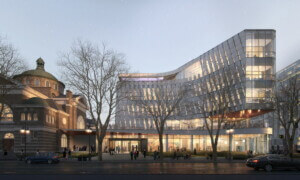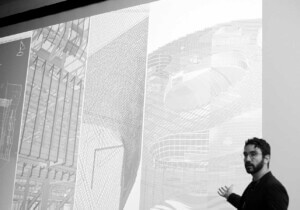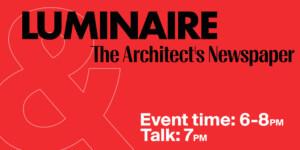| Brought to you by: |
Self-supporting tessellations can take almost any form.
“People are pretty burned out on the office cubicle and panel systems,” said Nat Porter, general manager of Seeyond Architectural Solutions. The company, which launched this month, aims to give architects an alternative to standard space dividers with its new user-controlled parametric design and digital fabrication building system. Seeyond’s history goes back ten years, to sculptor and designer Jonas Hauptman’s experimentations with folded materials. For a class he was teaching, he turned for materials to Liberty Diversified International (LDI), whose roots are in the corrugated fiberboard industry. Hauptman teamed up with Paul James, a mathematician, economist, and industrial designer already working with LDI (now Seeyond’s parent company). They presented their business proposal in 2009 and the new fabrication system was born.
- Fabricator Seeyond
- Designer Seeyond
- Location National
- Status Ongoing
- Material Flat stock
- Process CNC cutting and scoring
“There was a big gap in what you could envision on a computer and what you could build,” said Porter. “The business idea was to close that gap.” The company supplies its own specification tool, called Tess, to architects and designers (an iPad app is available). From there, the user selects a type of feature—wall-mounted structure, non-loadbearing wall, ceiling cloud, column wrap, or partial enclosure—then modifies its size, shape, and tessellation before choosing other options like relief patterns or lighting. Because Tess is a parametric design tool, any change of one geometric variable modifies all dependent variables as well. Once the design is finalized, 3-D modeling data is converted to 2-D CAD information before being exported in machine code for fabrication. The fabrication technique can be applied to any cold-formed material that can be cut and scored with a CNC machine, then folded into shape. Each tessellation within the design is a monocoque, or self-supporting shell.
The company says a designer should know within hours of creating a model what a feature will cost and how it looks rendered into a space. Base pricing ranges from $50-$85 per square foot and manufacturing time, from design to installation, is expected to be four to six weeks.
Most structures are assembled in a few hours (watch a video of the process here), and none require any tools. Once CNC cutting is complete, flat pieces are folded; then, modules are aligned with high-performance, rare earth magnets. For early projects, the company will build sub-assemblies in its 5,000-square-foot Golden Valley, Minnesota, facility and ship them to the client, but in the future structures could be flat-packed and assembled on site. Freestanding structures are anchored to the floor with a heavy base plate or bolts.
The system is so new that the company is only now beginning its first commissioned projects, including a freestanding enclosure for a PR firm and an illuminated restaurant wall, but it has built several of its own installations. These include a cable-hung cloud, a curving, wood-veneered shell, and a wall with an interior matrix that comes into high relief when illuminated. Along with LED modules, acoustical modules and designs for outdoor structures are also in the works.
“I think our challenge is that the possibilities are infinite, but infinity overwhelms people,” said Porter. “So a lot of our job is going to be showing traditional applications, but our real goal is to give power back to the architects and designers. It’s going to be really interesting to see where they take it.”










